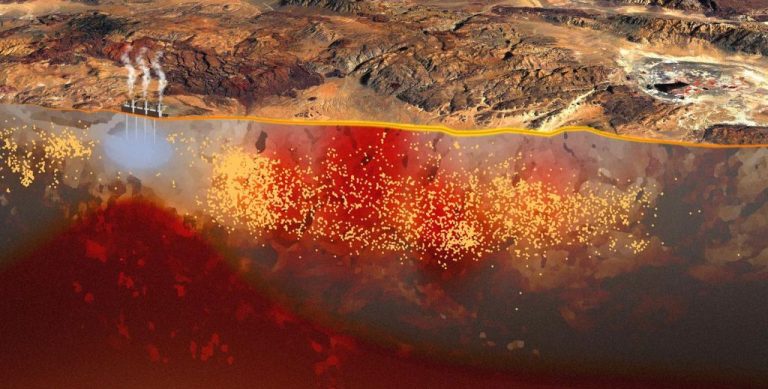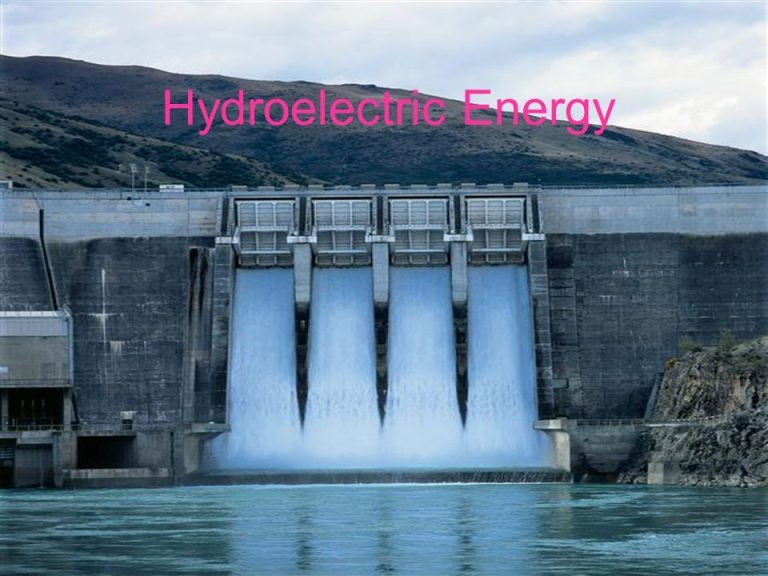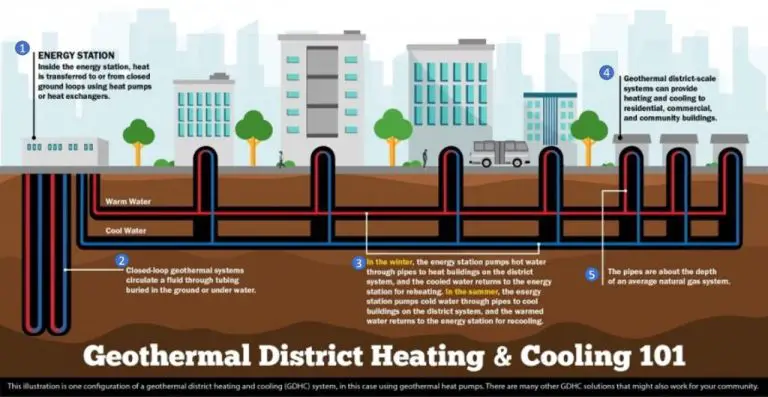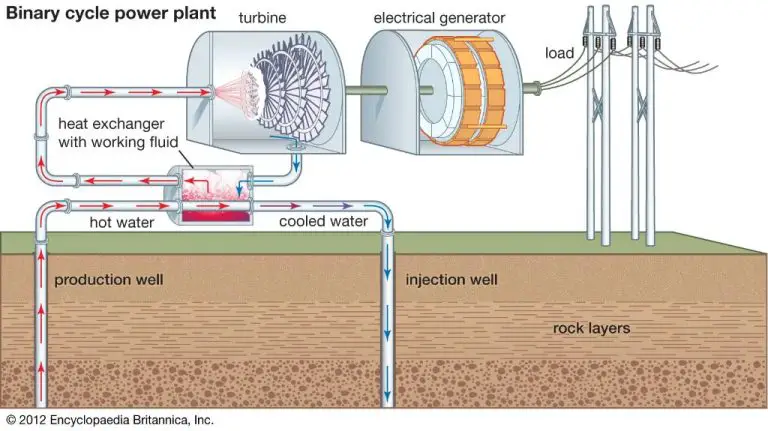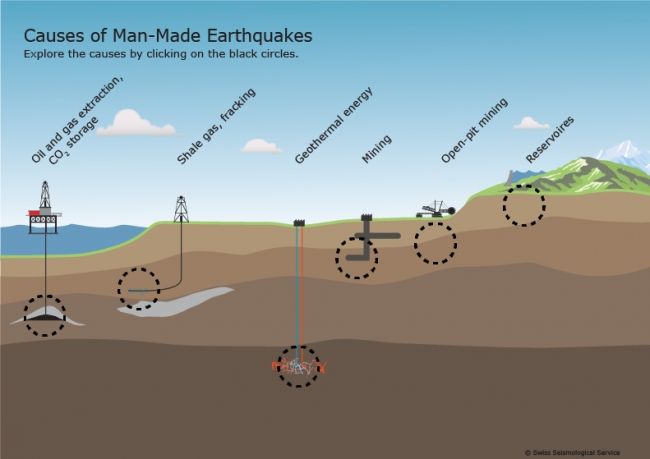Geothermal Energy: Redefining Sustainable Solutions
Geothermal energy is heat derived from the earth’s interior that can be harnessed to generate clean and sustainable electricity. Interest in developing geothermal resources has grown in recent years as countries seek affordable renewable energy to meet climate goals and reduce dependence on fossil fuels. Advances in drilling and energy conversion technologies have dramatically expanded the geothermal resource base that could be viably tapped worldwide.
How Geothermal Energy Works
Geothermal energy utilizes heat from the Earth’s interior to generate renewable power and provide heating and cooling. The high temperatures underneath the Earth’s surface result from a combination of residual heat from planetary accretion and friction produced as heavier elements sink toward the core during the Earth’s formation. This geothermal energy can be accessed by drilling wells into underground reservoirs to tap steam and hot water that can be brought to the surface for direct use or electricity generation.
There are three main types of geothermal energy technologies used today:
Direct Use: This involves using hot water from springs or reservoirs directly for applications like heating buildings, growing plants in greenhouses, drying crops, or bathing. Direct use requires aquifer temperatures of at least 68 to 77°F.
Electricity Generation: Geothermal plants use steam or high-temperature water from drilled wells to power turbines that generate electricity. There are different process configurations, but they involve injecting cold water into hot, permeable rock, capturing the resulting steam, and routing it to turn generator turbines.
Geothermal Heat Pumps: These systems operate by moving heat between the shallow ground and buildings. Pipes buried in the Earth exchange heat with the surrounding ground, providing heating in winter and cooling in summer. Ground temperatures are warmer than air in winter and cooler than air in summer.
Types of Geothermal Energy Systems
There are several main types of geothermal energy systems currently in use:
Hydrothermal Systems
Hydrothermal systems tap into naturally occurring pockets of steam or hot water found deep underground, using wells to bring the geothermal fluid to the surface. The steam can be used to turn turbine generators to produce electricity. Hydrothermal systems are the most common type of geothermal power plants today.
Enhanced Geothermal Systems (EGS)
EGS involves injecting fluid into hot but dry underground areas to create a geothermal reservoir. The fluid fractures the rock, allowing water to circulate and become heated. The heated water is then pumped back up a production well to generate electricity. EGS has the potential to expand geothermal energy usage to areas without natural hydrothermal resources.
Direct Use
Direct use utilizes hot water from geothermal reservoirs directly rather than generating electricity. Common applications include heating buildings, greenhouses, fish farms, and industrial processes. Geothermal heat pumps can use shallow ground warmth for space heating and cooling.
Benefits of Geothermal Energy
Geothermal energy provides several key benefits that make it an appealing sustainable energy solution. First and foremost, it is a clean, renewable energy source that does not generate greenhouse gas emissions or other pollutants. Unlike fossil fuels, geothermal energy does not require burning fuels, so it does not contribute to climate change or air pollution.
Relatedly, geothermal energy reduces reliance on non-renewable energy sources like coal, oil, and natural gas. Widespread adoption of geothermal systems could dramatically lessen dependence on fossil fuels and improve energy security. Geothermal energy is available at all hours of the day, regardless of weather conditions, providing a consistent baseload power supply.
Geothermal energy is also considered highly sustainable compared to other energy sources. Geothermal reservoirs can provide constant heat for many decades with proper resource management. And the technology has a small physical footprint above ground. Overall, geothermal offers a clean, renewable way to provide energy with minimal environmental impact.
Current Use of Geothermal Energy
Geothermal energy currently provides a small but growing share of the world’s energy supply. As of 2019, the global installed capacity for geothermal power generation was around 15 GW, producing roughly 90 TWh of electricity annually. This accounts for about 0.3% of total global electricity production.
The countries leading in geothermal power capacity are the United States, Indonesia, and the Philippines. The United States has the largest installed capacity with over 3.6 GW, predominantly located in California and Nevada. Indonesia follows with about 2 GW of capacity and the Philippines with about 1.9 GW. Other countries utilizing substantial geothermal power include Turkey, New Zealand, Mexico, Italy and Iceland.
In recent years, geothermal power capacity has been growing at a rate of about 5% annually. With increasing interest in renewable energy sources, this growth rate is expected to accelerate going forward. Most of the potential for new geothermal power projects is located in African and Asian countries along the so-called “Ring of Fire” volcanic belt of the Pacific Ocean.
Geographic Potential
Geothermal energy has significant untapped potential globally. Favorable geography includes areas with high underground heat flow, such as near tectonic plate boundaries, volcanic activity, geysers, and hot springs. Countries like Iceland, New Zealand, Philippines, Indonesia, and parts of the western U.S. are especially promising.
In the U.S., the West Coast and states like Alaska and Hawaii have abundant geothermal resources due to the Pacific Ring of Fire tectonic plate activity. According to the U.S. Geological Survey, over half of U.S. geothermal resources are concentrated in seven western states: Alaska, Arizona, California, Colorado, Idaho, Nevada, New Mexico, Oregon, Utah, Washington, and Wyoming. California generates the most geothermal power in the U.S. from resources like The Geysers in the Mayacamas Mountains north of San Francisco.
Advances in technology like enhanced geothermal systems are also expanding geothermal potential to more areas. By drilling deeper holes and injecting water into hot dry rocks, geothermal resources can be developed almost anywhere. This means geothermal energy could potentially provide a sustainable baseload power source globally.
Challenges and Limitations
While geothermal energy has many benefits, there are some challenges and limitations to be aware of:
High Upfront Costs
Drilling geothermal wells and installing geothermal systems can cost millions of dollars upfront. The infrastructure for geothermal plants is expensive to build. This makes the initial capital costs higher than other renewable energy sources like solar or wind.
Exploratory Drilling Risks
There are risks associated with the exploratory drilling phase. Drilling deep wells is expensive and you may not find a viable geothermal resource in that location. This exploration phase has an element of uncertainty.
Specific Geographic Requirements
Geothermal energy can only be harnessed in specific geologic locations with ideal subsurface temperatures and geothermal reservoirs. This limits the widespread adoption of geothermal across all locations.
Latest Technological Advances
The geothermal energy sector has seen rapid innovation and the development of new technologies in recent years. Here are some of the most promising and exciting developments:
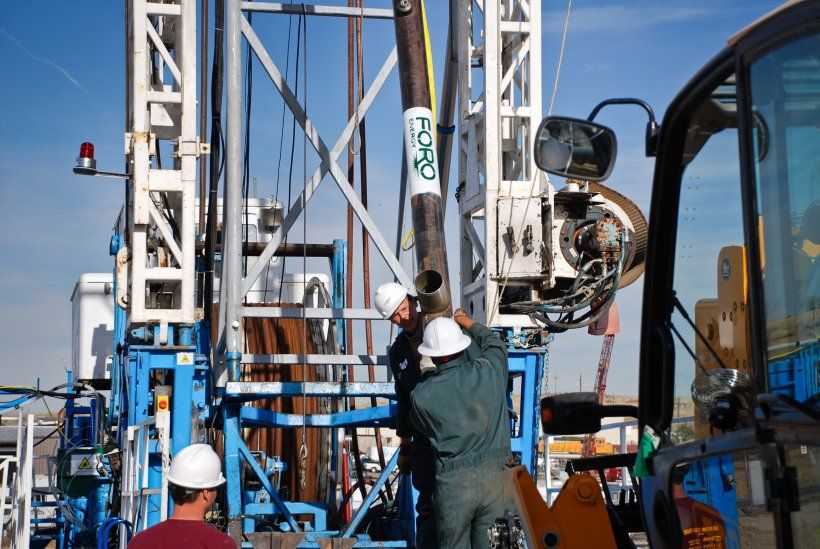
Enhanced Geothermal Systems (EGS) – Also known as engineered geothermal systems, EGS allows people to tap into geothermal resources that were previously unreachable by conventional drilling methods. By injecting water into hot, dry underground rock formations, EGS creates artificial geothermal reservoirs.
Co-produced Geothermal Energy – New techniques allow geothermal electricity generation through brine extracted during oil and gas drilling. This allows for geothermal energy harvesting from unconventional geothermal resources.
Hybrid Power Plants – Combining geothermal power with other renewable sources like solar PV allows for more consistent and reliable energy production. Excess geothermal steam can also be used to store energy from intermittent sources.
Advances in Drilling Technology – New techniques like directional drilling, high-temperature drilling fluids, and diamond drill bits allow access to deeper and hotter geothermal resources than previously possible. Drilling costs continue to decrease.
Improved Power Cycle Efficiency – Through the use of binary power plants, hybrid cooling systems, and optimized thermal cycles, the amount of electricity generated per unit of geothermal steam has increased substantially.
Smart Monitoring – Real-time monitoring and predictive analytics allow geothermal operators to optimize production and rapidly identify any problems. This maximizes productivity.
Modular Power Units – Smaller, modular geothermal power units allow generation of up to a few megawatts of electricity. This allows geothermal to be viable for distributed energy solutions.
With continued research and development, geothermal energy technology will keep improving. The future is bright for this sustainable renewable resource to play an even greater role in the global energy mix.
Future Outlook
The future looks bright for geothermal energy. As climate change continues to threaten traditional energy sources, geothermal is poised to play a major role in the renewable energy transition. Projections indicate strong growth and development for geothermal going forward due to several key factors:
First, geothermal capacity is expected to expand globally as new technologies unlock access to geothermal resources previously considered unviable. Enhanced geothermal systems (EGS), which create artificial geothermal reservoirs, could increase geothermal potential by orders of magnitude in areas lacking natural hydrothermal resources.
Second, hybrid geothermal plants that combine geothermal with solar or biomass show promise for boosting output and overcoming intermittency issues with other renewables. These hybrid systems could make geothermal an even more flexible and reliable energy solution.
Third, innovative drilling techniques and economies of scale are driving down costs and making geothermal more cost-competitive with conventional power. This will spur adoption, especially as geothermal prices fall below coal and natural gas.
Finally, supportive policies and incentives around the world are accelerating geothermal development. With increased government and private investment into R&D and commercial projects, geothermal is poised for rapid growth.
In summary, geothermal is transitioning from a niche energy player to a major renewable solution. With its continually falling prices, small land footprint, 24/7 availability, and vast untapped potential, geothermal is ready to play a leading role in building a sustainable energy future.
Conclusion
In conclusion, geothermal energy has enormous potential as a renewable, sustainable energy source. By harnessing heat from underneath the earth’s surface, geothermal power plants can generate baseload electricity with minimal carbon emissions. Several types of geothermal energy systems exist, including conventional hydrothermal, EGS, and direct use applications.
The benefits of geothermal are clear – it offers a clean, renewable alternative to fossil fuels. Geothermal resources are always available, unlike wind and solar which rely on weather conditions. And because the heat is stored below ground, geothermal plants have a small land footprint compared to other renewables.
While geothermal energy is currently underutilized, representing only about 0.3% of US power generation, its capacity is enormous. New technological innovations like EGS provide access to geothermal resources almost anywhere. With supportive policies and further technological progress, geothermal can play a major role in building a sustainable energy future.

